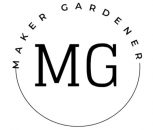I have recently been fabric dyeing using natural dyes. I have started by using the roll-up method. Where you just roll the dye products on to the fabric together. Like making a sandwich roll. The patterning effect wasn’t as nice I found as the patterns were quite uneven. This blog post is about shibori patterning technique.
Now I have decided to use shibori patterning as I saw some lovely products used in indigo dyeing. It’s winter here at the moment so not much of strong sunlight to do indigo dyeing. I had loads of dahlia in the garden at the moment so I have decided to use them.
This post may contain some affiliate links and banners which means I will make a small commission at no cost to you should you decide to click thru and make a purchase. For further information on my disclosure policy click here.

What is shibori?
Shibori as the name goes comes from it’s origin in Japan. It’s a method of making patterns. Commonly known as tie dye method. However, I find that shibori has got specific pattern and techniques that creates these wonderful patterns that influence the world of resist and tie dye art. It can like book written just on shibori patterning. Therefore this blog post is skimming on the subjects surface. I love fabrics and always been fascinated on how they look and the colours that make it all happen.

It is a method commonly used in indigo dyeing. Therefore I have adapted some of the patternings in other types of natural dyeing as well. It is often done in natural fibres like silk, cotton and hemp (linen).

To make shibori patterning it is quite easy. Either use anything you have at home. I am a firm believer in recycling things I can find at home rather than going to buy. Take for example the one I have done on my blog post on tagetes minuta dyeing.

The picture is not that clear, I have used rubber bands to tie the ends of the folded fabric and that shibori patterning effect.
The above done on dahlia flowers dyeing I use wooden clothes pegs that I have got around at home. So go out and experiment, create and dye with anything you like. Here is my post on dahlia flowers dyeing. There is lots one can experiment with beads, string and soy beans to create a nice effect.
I have yet to try on indigo dyeing as I waiting for the weather to warm up so that I can work outside. The above dyeing experiments with mordant and natural dyeing is what I have done over in autumn.
With natural dyeing it is hard to predict what will happen as it is very dependent on the product which is of natural produce. So while I can get this vivid vibrant effect, it doesn’t mean it will happen again. So go ahead and experiment. I have use shibori patterning as I just didn’t want to just dye the fabric and that’s it. I want to make patterns on the fabric as well. Be it a print or patterning effect. It just makes fabric/ textile dyeing more fun and interesting.
A great old favourite book on fabric dyeing & printing, by Kate wells.
I know a lot of dyers use indigo to great effect and make a small craft business out of it. So do the experiment and thank you for stopping by.






Pingback: How to dye fabrics using indigo at home. - Maker gardener